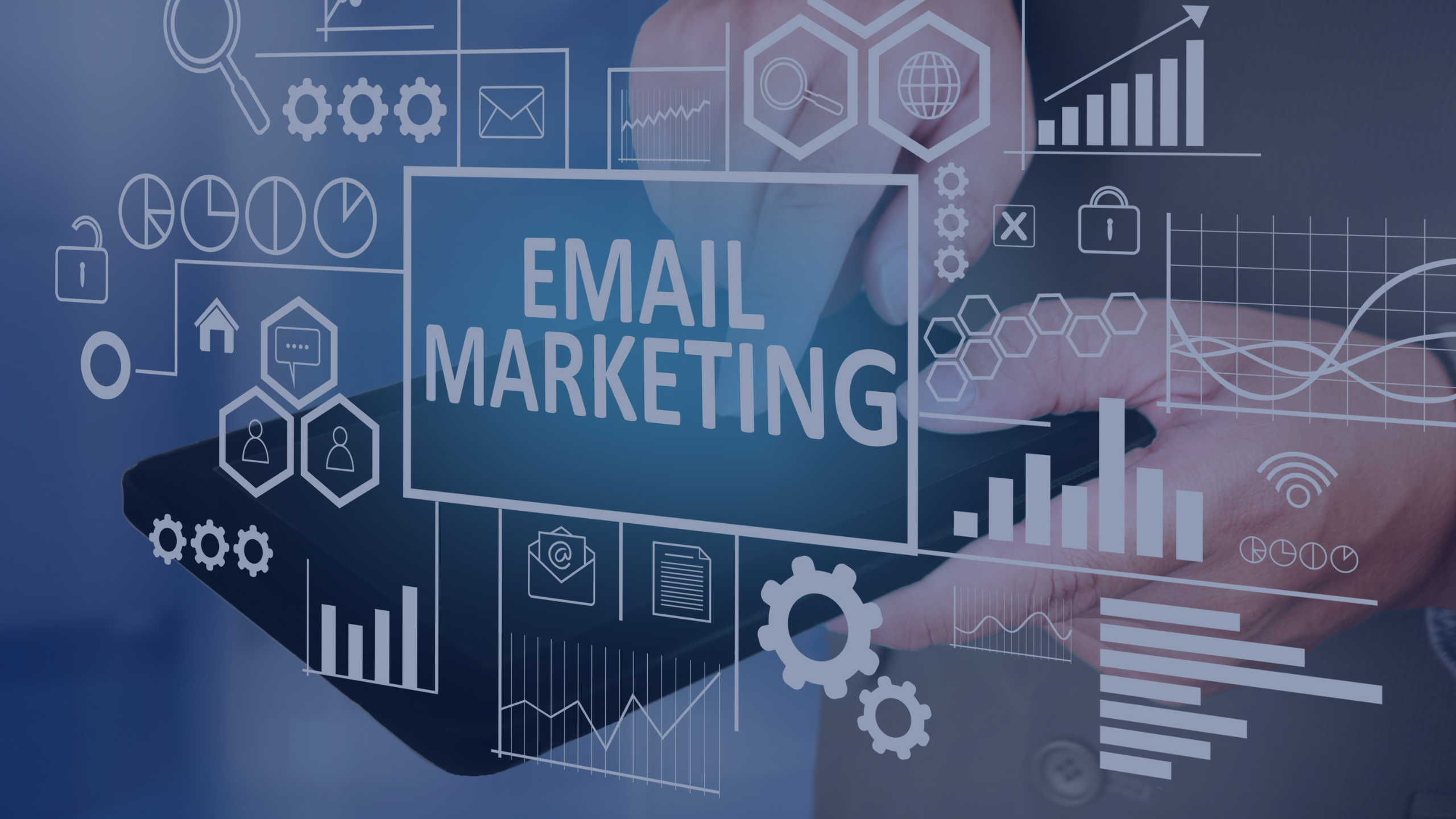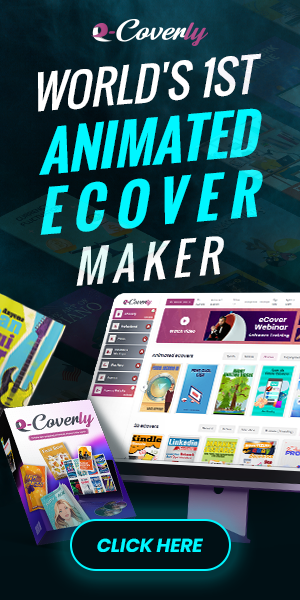Email Marketing Best Practices For Engagement and Conversion
As a business owner, you are aware of how important marketing is to your company's success. However, choosing where to allocate your time and budget can be difficult given the variety of marketing platforms accessible.
Here we have email marketing, a potent instrument that has been repeatedly shown to produce results for companies of all sizes. In fact, email marketing has an average ROI of 3800%, which means that companies typically get back $38 for every dollar invested in it. That is a fantastic chance for development and achievement.
It's difficult to perfect email marketing, though. For your campaigns to have the most impact, you need to have a thorough grasp of your audience, the capacity to create appealing content, and the courage to test and tweak them frequently. However, there are enormous benefits to getting it properly. When used effectively, email marketing may help you grow your client base, boost engagement, and eventually boost revenue.
We'll delve deeply into the realm of email marketing in this post and discuss with you the greatest strategies for attracting and converting subscribers with you. Understanding your audience, writing catchy subject lines, producing interesting content, optimizing for mobile, incorporating powerful calls to action, utilizing social proof, testing, and gauging outcomes, and avoiding common mistakes are all topics we'll cover.
So grab a seat and get ready to advance your email marketing. This manual provides all the information you need to be successful, whether you're just beginning to start or trying to improve your current plan. Let's start now!
Understand Your Audience
It's simple for a business owner to become preoccupied with running their company on a daily basis. However, it's imperative that you take the time to comprehend your target and segment your email list appropriately if you want to be successful with email marketing.
Why is this so important? Well, think about it: Your consumers are distinct individuals with their own passions, tastes, and problems. By getting to know your audience and what matters to them, you can customize your email messages to specifically address their requirements, which will eventually increase engagement and conversion rates.
So how can you get client information and use it to customize your emails? To get you started, consider these suggestions:
Use sign-up forms to gather relevant information: You have the chance to compile vital data about signup for your email list, including their name, location, interests, and preferences. In order to use this data to segment your list and tailor your messages, make sure your sign-up form has fields for it.
Monitor subscriber behavior: Pay attention to how your email subscribers respond to them. What emails do they read? What links are they choosing to click on? Utilize this knowledge to customize your material to their tastes and areas of interest.
Conduct surveys and polls: Sometimes asking your audience straight out is the greatest approach to understanding them. Use surveys and polls to get input on what customers appreciate, want to see more of, and are having trouble with your brand.
Segment your list based on customer data: Utilize the client information you've collected to divide your email list into smaller groups based on shared interests, habits, and preferences. You will be able to send more specialized messages that speak directly to the requirements of each segment thanks to this.
Personalize your emails: Utilize the information you've acquired to add dynamic content to your emails, such as personalized product suggestions or subscriber behavior-based messages, to make them more personalized. Your readers will feel that your emails are more pertinent and interesting as a result.
The effectiveness of your email marketing initiatives depends on segmenting your email list and comprehending your audience. You may speak directly to the needs of your subscribers and develop longer-lasting connections with them by collecting client data and using it to tailor your emails. So invest the time to learn about your audience, and then watch as the conversion and engagement rates for your emails skyrocket.
Craft Compelling Subject Lines
Writing captivating subject lines is one of the most crucial things you can do to guarantee the success of your email marketing efforts. Why? Because your subject line will be the first thing your subscribers see when they open your email, it will determine whether they open it or not.
In fact, studies show that 47% of email receivers base their decision to open or not read an email simply on the subject line. That startling number emphasizes how important it is to craft effective subject lines.
How then can you craft subject lines that will pique the interest of your readers and encourage them to open your emails? To get you started, consider these suggestions:
Keep it short and sweet: Your subject line should be succinct and direct, with 50 characters or fewer being optimal. This will make sure that it is readable at a glance and that it doesn't get chopped off in the inboxes of your subscribers.
Be specific and relevant: Your email's subject line should be precise and pertinent to its content. Instead of attempting to be smart or ambiguous, concentrate on expressing the advantage or value that your email offers to your readers in a plain and concise manner.
Use action-oriented language: To convey a feeling of urgency and motivate your readers to act, use action-oriented language in your subject lines. Using phrases like "act now," "limited time," and "don't miss out" might help increase opens and clicks.
Personalize when possible: Put names of your subscribers or other pertinent information in your subject lines by using customization tokens. This can help your subscribers feel more connected to you and more interested in your emails.
Test and optimize: In order to determine which subject lines are most effective for your audience, it's crucial to test and optimize them over time. Track your open rates to determine the most effective subject lines, then try out other strategies like using emojis or posing a question.
Here are a few illustrations of strong topic lines:
- "Last chance to save 20% on your favorite products"
- "New arrival alert: Shop our latest collection now"
- "Your exclusive invitation to our VIP sale"
- "Don't miss out on this limited-time offer"
- "How to boost your productivity in just 10 minutes a day"
Your email marketing initiatives will succeed if you create interesting subject lines. You may write subject lines that pique the interest of your readers and encourage opens and clicks by paying attention to these pointers and experimenting with various strategies. Take the time to craft effective subject lines, and you'll see an increase in email engagement and conversions.
Create Engaging Content
Making compelling content is one of the most crucial things you can do to make sure your email marketing efforts are successful. In addition to giving your subscribers value and information, your material should be crafted in a way that connects with them and motivates them to take action.
Here are some pointers for producing material that will draw in and hold the interest of your subscribers:
Know your audience: Knowing your audience is the first step in developing compelling content. To generate content that is pertinent to and beneficial to them, you must comprehend their needs, interests, and motivations. This entails segmenting your email list, performing market research, and studying client data.
Be informative: Your material should benefit your readers and educate them. This might take the shape of instructional material, business news, or how-to manuals. Make sure your material is factual, well-researched, and offers your readers a clear advantage.
Be authentic: The tone and values of your brand should be reflected in your content. Instead of attempting to be someone you're not, be genuine and truthful with your readers. Your brand will become more relevant as a result, which will assist to increase credibility and trust.
Use storytelling: Using stories to engage your audience and establish an emotional connection with them is a very effective strategy. Use anecdotes to highlight your arguments and demonstrate how your services or goods may assist your subscribers to solve their difficulties.
Use visuals: Text may be broken up with images to make it more interesting and engaging. Make your material more visually attractive by illustrating your arguments using photos, videos, and infographics.
Keep it concise: Keeping your material succinct and simple to read is just as vital as giving your followers value and information. To break up your material and make it easier to read, use bullet points, short paragraphs, and subheadings.
Use a strong call-to-action: A powerful call-to-action that motivates your subscribers to act should be included in your material as a last step. This can be a button or a link, and it needs to make it very obvious why action is advantageous.
For your email marketing efforts to be successful, you must provide interesting content. You can grab your subscribers' attention and motivate them to act by using these suggestions to produce material that is educational, genuine, and emotionally engaging. In order to increase email engagement and conversions, take the time to understand your audience, employ narrative and imagery, and include a compelling call-to-action.
Optimize for Mobile
I can assure you that the success of your email marketing initiatives depends on mobile optimization. Most people read their emails on mobile devices in today's fast-paced world, so if your emails are not mobile-friendly, you run the risk of missing out on potential clients.
The following are some top tips for making your emails mobile-friendly:
Use a responsive design: With the use of responsive design, your email may adjust to the size of the screen being used to see it. This implies that both desktop and mobile devices will display your email beautifully. No matter what device they are using, your subscribers will have a seamless and pleasurable experience if you choose a responsive design.
Keep it simple: Keep things straightforward when mobile-optimizing your emails. Refrain from utilizing too many photos, lengthy paragraphs of text, or intricate layouts. Use a clear, straightforward layout instead that is simple to read and navigate.
Use a single-column layout: One of the best practices for mobile optimization is to use a single-column layout. This design makes it simple for subscribers to go through your information and makes your email easy to read on smaller displays.
Use large fonts and buttons: Use big text and button sizes while creating your mobile email. Customers will find it simpler to read and engage with your content as a result, especially on smaller displays. Additionally, utilizing a call-to-action (CTA) that is clear and succinct will increase the likelihood that subscribers will perform the required action.
Test your emails: It's crucial to test your emails on various mobile devices and email applications before distributing them to your users. By doing this, you can make sure that your emails appear fantastic on all devices and find any design or layout flaws.
The effectiveness of your email marketing initiatives depends on how well your emails are optimized for mobile devices. You can make sure that your subscribers have a seamless and pleasurable experience, regardless of the device they are using, by utilizing a responsive design, keeping things simple, employing a single-column layout, using large fonts and buttons, and testing your emails. Take the effort to make your emails mobile-friendly, and you'll see a dramatic increase in email engagement and conversions.
Include Strong Calls to Action
I can assure you that the success of your email marketing efforts depends heavily on the presence of a compelling call to action (CTA). Your subscribers will be more likely to perform the required action, such as making a purchase, signing up for a webinar, or downloading an ebook if your CTA is clear and engaging.
Following are some guidelines for creating powerful CTAs that increase conversions:
Use action-oriented language: To motivate your readers to take action, use language that is action-oriented. Create a feeling of urgency by using verbs like "download," "register," "buy," or "learn" to compel your subscribers to perform the necessary action.
Make it clear and concise: Your CTA should be succinct and clear so that your subscribers understand what has to be done. Aim to avoid using words that might confuse or irritate your readers. Use language that is clear, plain, and uncomplicated to convey the intended action.
Use a contrasting color: Your CTA button will stand out from the rest of your email if you use a contrasting color. As a result, there is a higher chance that subscribers will click the button. Use a color that goes well with the overall look of your business yet stands out enough to draw the reader's attention.
Create a sense of urgency: For your subscribers, creating a feeling of urgency may be a great incentive. Create a feeling of urgency by using words like "act now" or "limited-time offer" to nudge your subscribers towards taking action.
Place your CTA in a prominent location: The positioning of your CTA is just as crucial as the words you use. Make sure to clearly display your CTA in your email so that recipients can notice it. This might be in your email's footer or sticky header, in the midst of your text, or even at the conclusion.
Your email marketing campaigns must include a compelling call to action if you want to increase conversions. You can motivate your subscribers to act and accomplish your email marketing goals by utilizing action-oriented language, being clear and succinct, employing a contrasting color, conveying a feeling of urgency, and positioning your CTA prominently. Therefore, spend some time creating a strong CTA, and then watch as your email engagement and conversion rates skyrocket.
Use Social Proof
I can assure you that incorporating social proof into your email marketing campaigns is a potent strategy for winning subscribers' respect and confidence. Social proof is a psychological phenomenon where people base their own conduct on the views and behaviors of others. Your subscribers' trust in your goods or services may rise if you utilize social proof to demonstrate to them that others have had favorable brand experiences.
You can utilize the following instances of social proof in your emails:
Customer reviews and testimonials: Because they originate from actual customers who have utilized your goods or services, customer evaluations, and testimonials are a potent kind of social proof. Including testimonials from pleased customers in your emails will help you gain their confidence and credibility and persuade them to buy.
Social media followers and likes: Social proof may also take the form of boasting about your following and likes on social media. Including a link to your social media accounts in your email will help you build trust with your readers if you have a sizable social media following.
Influencer endorsements: The endorsement of an influencer who is well-known in your field may be a potent source of social proof. Include a quotation or testimonial from an influencer who has backed your company if you have a relationship with them. This will help your subscribers see you as a credible source.
The following advice can help you include social proof in your emails:
Be strategic about where you place social proof in your email: Your social proof's placement can significantly affect how well it works. Think about including social proof in your email's body or next to your call to action.
Use visual cues to draw attention to your social proof: Your social proof will shine out in your email if you use visual cues like graphics or symbols to bring attention to it.
Keep your social proof authentic and relevant: Make sure the social proof you provide in your emails is genuine and appropriate for both your business and your subscribers. Avoid the temptation to utilize phony reviews or endorsements, since this can eventually hurt your credibility.
Including social proof in your email marketing campaigns is a great method to gain subscribers' confidence and credibility. You may demonstrate to your subscribers that others have had excellent experiences with your company by including customer reviews and testimonials, social media followers and likes, and influencer endorsements. Additionally, you can enhance the impact of your social proof and accomplish your email marketing objectives by strategically placing it, employing visual cues to bring attention to it, and maintaining its authenticity and relevance.
Test and Measure Results
I can confirm that assessing the effectiveness of your email marketing initiatives through A/B testing is essential to their success. You may improve your campaigns and reach your goals by testing and measuring your emails to determine what works and what doesn't.
The following advice can help you test and evaluate your email marketing campaigns:
Set clear goals: Prior to testing your emails, it's critical to have definite objectives for what you hope to accomplish. Do you desire higher open rates? rates of click-through? Conversions? You may concentrate on your testing and determine your performance by having certain goals in mind.
Test one variable at a time: It's crucial to test one variable at a time when doing A/B tests. You may test various topic lines or call-to-action buttons, for instance. You may isolate the effect of a particular variable on your results by testing it one variable at a time.
Use a large enough sample size: It's crucial to employ a sizable sample size in A/B testing in order to obtain reliable findings. To obtain statistically meaningful results, you might need to test your emails on a sample of your subscribers, depending on the size of your email list.
Track key metrics: Tracking essential data like open rates, click-through rates, and conversions is crucial for determining the effectiveness of your email marketing initiatives. You may evaluate the effectiveness of your efforts and pinpoint areas for development by monitoring these indicators.
Optimize based on data: It's crucial to use the data from your A/B testing and critical metrics once you've recorded them to optimize your campaigns. For instance, you might utilize the information to enhance future efforts if you discover that a certain subject line works better than others.
Your campaigns' success depends on A/B testing and tracking the outcomes of your email marketing. You may enhance your email marketing outcomes and accomplish your goals by establishing clear goals, testing one variable at a time, utilizing a sufficient sample size, monitoring important metrics, and adjusting based on data. You can maximize the effectiveness of your email marketing efforts by testing and measuring your emails, so don't be hesitant to experiment and try new things.
Avoid Common Mistakes
I recognize the significance of avoiding typical email marketing errors that may have a negative effect on open and conversion rates. Even with the greatest of intentions, email marketing blunders are simple to make. However, by being aware of these errors and taking precautions to avoid them, you may improve subscriber engagement and boost the success of your ads.
Here are some typical email marketing errors to avoid:
Failing to segment your list: Failure to segment your list is one of the major errors that firms make when using email marketing. You are sacrificing the chance to customize your communications to the unique interests and requirements of various audience segments by sending the same generic message to all of your subscribers. You may produce more tailored and pertinent material that appeals to your readers by segmenting your list.
Ignoring mobile optimization: Your emails must be optimized for mobile viewing since an increasing number of individuals access their emails on mobile devices. Your readers may lose interest and unsubscribe if your emails are challenging to read or navigate on a mobile device. Use a responsive design for your emails, and make sure the text is clear and easy to read. This will ensure that they are optimized for mobile consumption.
Focusing too much on sales: Although generating sales is frequently the ultimate aim of email marketing, it's crucial to avoid placing an excessive amount of emphasis on it in your emails. Your readers may tune you out or perhaps unsubscribe if your emails are overly sales-oriented. Instead, concentrate on giving your subscribers value by offering knowledge, advice, and insights.
Sending too many emails: Sending too many emails is a further email marketing blunder. Your subscribers may start to feel overloaded and irritated if you send them a lot of emails. Make sure the emails you send are only pertinent and helpful to your readers, and think about creating a plan to prevent sending too many emails quickly.
Neglecting testing and optimization: Last but not least, skipping testing and tuning might reduce the success of your email marketing initiatives. You are passing up the chance to optimize your campaigns for higher engagement and conversion rates by not testing your emails or monitoring your outcomes. To continue enhancing the efficiency of your email marketing, make sure you periodically test various factors and keep track of your outcomes.
Successful email marketing strategies depend on avoiding common blunders. You can increase engagement and conversion rates and strengthen your relationship with your subscribers by segmenting your list, optimizing for mobile, putting an emphasis on offering value, being aware of your email frequency, and routinely testing and tweaking your content. Your subscribers (and bottom line) will appreciate it if you take the time to analyze your email marketing plan and make sure you're avoiding these frequent blunders!
Congratulations! This article on mastering email marketing best practices is now complete. We hope you have picked up some useful information and suggestions for enhancing your email marketing efforts. Let's review a few of the most important lessons from this essay.
First, we discussed the effectiveness of email marketing and why it's so important for companies to understand this strategy. After that, we spoke about how crucial it is to segment your email list and understand your audience in order to provide tailored content that appeals to your subscribers.
Next, we looked at how to write email subject lines that would persuade recipients to open them. We also provided advice on how to write captivating content that informs and entertains your readers.
We emphasized how important mobile optimization is and how important it is to make sure your emails are clear and legible on all devices. Additionally, we discussed the value of compelling calls to action and social proof in fostering subscriber trust and trustworthiness.
We stressed the need of testing, measure, and use data to enhance your email marketing efforts. In order to keep you on track, we provided some typical email marketing errors to avoid.
Finally, we want to urge you to put these best practices into practice so that your email marketing efforts may start producing tangible results. Keep in mind that there is always potential for development with regard to email marketing. You can continue to engage and convert your subscribers while remaining current with best practices, which can help your business expand. Hope this helps, and happy emailing!












